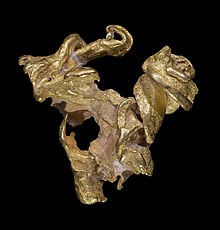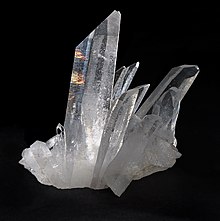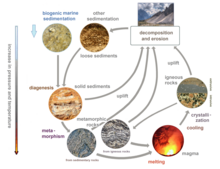ارضيات



ارضيات (Geology) فطرتي سائنس جي هڪ شاخ آهي جنهن جو تعلق ڌرتيءَ ۽ ٻين ڪلاسيڪل شين سان آهي، جيڪا پٿر جا ٺهيل آهن ۽ اهي عمل جن جي ذريعي اهي وقت سان گڏ تبديل ٿين ٿا.[1] جديد ارضيات خاص طور تي زمين جي ٻين سڀني سائنسن کي، بشمول هائيڊرولوجي اوورليپ ڪري ٿو. اهو ڌرتيءَ جي سرشتي جي سائنس ۽ ڌرتيءَ جي سائنس سان جڙيل آهي.
ارضيات ڌرتيءَ جي ساخت ، ان جي مٿاڇري تي ۽ ان جي هيٺان انهن عملن جو انهن جي ان ڍانچي کي شڪل ڏني آهي، کي بيان ڪري ٿو. جيولوجسٽ پٿر جي معدنيات جي جوڙجڪ جو مطالعو ڪن ٿا ته جيئن انهن جي ٺهڻ جي تاريخ ۾ بصيرت حاصل ڪن. ارضيات هڪ ڏنل هنڌ تي مليل پٿرن جي نسبتي عمر جو تعين ڪري ٿو ۽ جيو ڪيمسٽري (جيولوجي جي هڪ شاخ) انهن جي مڪمل عمر جو تعين ڪري ٿي.[2] مختلف پيٽرولاجيڪل، ڪرسٽلوگرافڪ ۽ پيليٽولوجيڪل اوزارن کي گڏ ڪرڻ سان، ارضيات جا ماهر ڌرتيءَ جي ارضياتي تاريخ کي مجموعي طور تي ترتيب ڏيڻ جي قابل ٿيا آهن. ارضيات جو ھڪڙو پاسو ڌرتيء جي عمر کي ظاھر ڪرڻ آھي. ارضيات پليٽ ٽيڪٽونڪس، زندگيءَ جي ارتقائي تاريخ ۽ ڌرتيءَ جي ماضي جي موسمن جو ثبوت ڏئي ٿو.
ارضيات جا ماهر وسيع طور تي ڌرتيءَ ۽ ٻين سيارن جي خصوصیتن ۽ عملن جو مطالعو ڪن ٿا. ارضيات جا ماهر ڌرتيءَ جي جوڙجڪ ۽ ارتقا کي سمجهڻ لاءِ وسيع قسم جا طريقا استعمال ڪندا آهن، جن ۾ فيلڊ ورڪ، پٿر جي وضاحت، جيو فزيڪل ٽيڪنڪون، ڪيميائي تجزيا، طبیعي تجربا ۽ عددي ماڊلنگ شامل آهن. عملي اصطلاحن ۾، ارضيات معدني ۽ هائيڊرو ڪاربن جي ڳولا ۽ استحصال، پاڻيءَ جي وسيلن جو جائزو وٺڻ، قدرتي خطرن کي سمجهڻ، ماحولياتي مسئلن کي حل ڪرڻ ۽ ماضي جي موسمي تبديليءَ ۾ بصيرت مهيا ڪرڻ لاءِ اهم آهي. ارضيات هڪ اهم تعليمي نظم آهي. اهو جيولوجيڪل انجنيئرنگ ۾ مرڪزي حيثيت رکي ٿو ۽ جيو ٽيڪنيڪل انجنيئرنگ ۾ اهم ڪردار ادا ڪري ٿو.
ارضياتي مواد[سنواريو]


جيولوجيڪل ڊيٽا جي اڪثريت مضبوط ڌرتيء جي مواد تي تحقيق مان اچي ٿي. شھابین (Meteorites) ۽ ٻيون ماورائي ڌرتي مواد پڻ جيولوجيڪل طريقن سان اڀياس ڪيا ويا آهن.
معدنيات:
معدنيات قدرتي طور تي موجود عناصر ۽ مرکبات آهن جن ۾ هڪ خاص هڪجهڙائي واري ڪيميائي ساخت ۽ ترتيب ڏنل ايٽمي ساخت سان. هر معدنيات ۾ مختلف جسماني خاصيتون آهن، ۽ انهن مان هر هڪ کي طئي ڪرڻ لاء ڪيترائي تجربا آهن. معدنيات اڪثر ڪري انهن تجربن ذريعي سڃاڻي ويندا آهن. نمونن کي جانچ ڪري سگهجي ٿو:
• رنگ: معدنيات انهن جي رنگ جي لحاظ کان گروپ آهن. گهڻو ڪري تشخيصي آهي پر نجاست هڪ معدني رنگ تبديل ڪري سگهي ٿي.
• اسٽريڪ: نموني کي پورسلين جي پليٽ تي ڇنڊڇاڻ ڪندي، اسٽريڪ جو رنگ معدني کي سڃاڻڻ ۾ مدد ڪري سگھي ٿو.
• سختي: معدنيات کي ڇڪڻ يا انڊنٽيشن جي مزاحمت.
• ڀڃڻ جو نمونو: هڪ معدني يا ته ڀڃڻ يا ڦاٽڻ ڏيکاري سگهي ٿو، اڳوڻو اڻ برابر سطحن جي ڀڃڪڙي آهي، ۽ بعد ۾ ويجهي فاصلي تي متوازي جهازن جي ڀڃڪڙي آهي.
• چمڪ: روشنيءَ جي ڪيفيت جيڪا معدنيات جي مٿاڇري مان ظاهر ٿئي ٿي. مثال آهن ڌاتو، موتي، مومي، سڪل.
• مخصوص ڪشش ثقل: معدنيات جي مخصوص مقدار جو وزن.
• ایفرویسنس: فيزنگ جي جانچ ڪرڻ لاء معدنيات تي هائڊرو ڪلورڪ ايسڊ ٽپڻ شامل آهي.
• مقناطيسيت: مقناطيس جي امتحان لاءِ مقناطيس استعمال ڪرڻ شامل آهي.
• ذائقو: معدنيات هڪ مخصوص ذائقو رکي سگهي ٿو جهڙوڪ هيلائيٽ (جنهن جو ذائقو عام لوڻ وانگر).
پٿر:
majority of geological data comes from research on solid Earth materials. Meteorites and other extraterrestrial natural materials are also studied by geological methods.
Mineral===
Minerals are naturally occurring elements and compounds with a definite homogeneous chemical composition and ordered atomic composition.
Each mineral has distinct physical properties, and there are many tests to determine each of them. Minerals are often identified through these tests. The specimens can be tested for:[3]
- Color: Minerals are grouped by their color. Mostly diagnostic but impurities can change a mineral's color.
- Streak: Performed by scratching the sample on a porcelain plate. The color of the streak can help identify the mineral.
- Hardness: The resistance of a mineral to scratching or indentation.
- Breakage pattern: A mineral can either show fracture or cleavage, the former being breakage of uneven surfaces, and the latter a breakage along closely spaced parallel planes.
- Luster: Quality of light reflected from the surface of a mineral. Examples are metallic, pearly, waxy, dull.
- Specific gravity: the weight of a specific volume of a mineral.
- Effervescence: Involves dripping hydrochloric acid on the mineral to test for fizzing.
- Magnetism: Involves using a magnet to test for magnetism.
- Taste: Minerals can have a distinctive taste such as halite (which tastes like table salt).
Rock===

A rock is any naturally occurring solid mass or aggregate of minerals or mineraloids. Most research in geology is associated with the study of rocks, as they provide the primary record of the majority of the geological history of the Earth. There are three major types of rock: igneous, sedimentary, and metamorphic. The rock cycle illustrates the relationships among them (see diagram).
When a rock solidifies or crystallizes from melt (magma or lava), it is an igneous rock. This rock can be weathered and eroded, then redeposited and lithified into a sedimentary rock. Sedimentary rocks are mainly divided into four categories: sandstone, shale, carbonate, and evaporite. This group of classifications focuses partly on the size of sedimentary particles (sandstone and shale), and partly on mineralogy and formation processes (carbonation and evaporation).[4] Igneous and sedimentary rocks can then be turned into metamorphic rocks by heat and pressure that change its mineral content, resulting in a characteristic fabric. All three types may melt again, and when this happens, new magma is formed, from which an igneous rock may once again solidify. Organic matter, such as coal, bitumen, oil, and natural gas, is linked mainly to organic-rich sedimentary rocks.
To study all three types of rock, geologists evaluate the minerals of which they are composed and their other physical properties, such as texture and fabric.
Unlithified material=== Geologists also study unlithified materials (referred to as superficial deposits) that lie above the bedrock.[5] This study is often known as Quaternary geology, after the Quaternary period of geologic history, which is the most recent period of geologic time.
Magma====
Magma is the original unlithified source of all igneous rocks. The active flow of molten rock is closely studied in volcanology, and igneous petrology aims to determine the history of igneous rocks from their original molten source to their final crystallization.
پوري زمين جي جوڙجڪ[سنواريو]
ارضياتي وقت[سنواريو]
ڌرتيءَ جي عمر ڳولڻ جا طريقا[سنواريو]
علائقي جي ارضياتي ترقي[سنواريو]
تحقيق جا طريقا[سنواريو]
ڌرتيءَ جي ارضيات[سنواريو]
اپلائيڊ ارضيات[سنواريو]
تاريخ[سنواريو]
فيلڊ يا لاڳاپيل مضمون[سنواريو]
پڻ ڏسو[سنواريو]
خارجي لنڪس[سنواريو]
| وڪيميڊيا العام ۾ ارضيات سان لاڳاپيل ابلاغي مواد ڏسو. |
| Wikibooks has a book on the topic of |
| وڪي قول ۾ ارضيات جي متعلق قول موجود آھي۔ |
- One Geology: This interactive geological map of the world is an international initiative of the geological surveys around the globe. This groundbreaking project was launched in 2007 and contributed to the 'International Year of Planet Earth', becoming one of their flagship projects.
- Earth Science News, Maps, Dictionary, Articles, Jobs
- American Geophysical Union
- American Geosciences Institute
- European Geosciences Union
- European Federation of Geologists
- Geological Society of America
- Geological Society of London
- Video-interviews with famous geologists
- Geology OpenTextbook
- Chronostratigraphy benchmarks
حوالا[سنواريو]
- ↑ "What is geology?". The Geological Society. حاصل ڪيل 31 May 2023.
- ↑ Gunten, Hans R. von (1995). "Radioactivity: A Tool to Explore the Past". Radiochimica Acta 70–71 (s1): 305–413. doi:. ISSN 2193-3405. http://doc.rero.ch/record/292801/files/ract.1995.7071.special-issue.305.pdf. Retrieved 2019-06-29.
- ↑ "Mineral Identification Tests". Geoman's Mineral ID Tests. وقت 9 May 2017 تي اصل کان آرڪائيو ٿيل. حاصل ڪيل 17 April 2017. Unknown parameter
|url-status=ignored (مدد) - ↑ Guéguen, Yves; Palciauskas, Victor (1994) (en ۾). Introduction to the Physics of Rocks. Princeton University Press: Princeton University Press. pp. 10. ISBN 978-0-691-03452-2. https://books.google.com/books?id=fCP5qyRyX-oC&dq=rocks&pg=PP7.
- ↑ "Surficial Geologic Maps" آرڪائيو ڪيا ويا 2016-02-16 حوالو موجود آهي وي بيڪ مشين. in New Hampshire Geological Survey, Geologic maps. des.nh.gov
